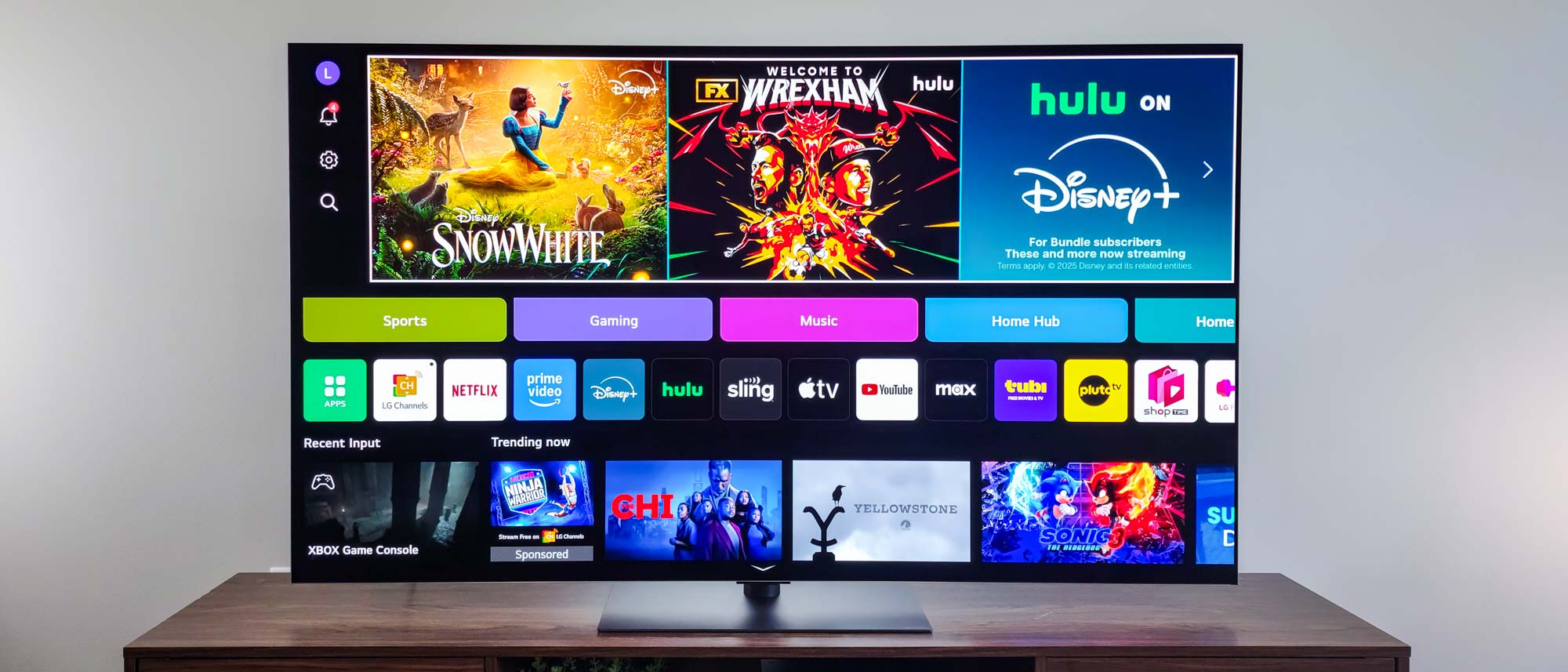Tom's Guide Verdict
The LG G5 is a picture powerhouse, with brightness and color performance that have to be seen to be believed. It also offers excellent features for gamers along with a very low input lag. It’s pricey, but the G5 is one of the best high-end OLED sets on the market.
Pros
- +
Nearly unparalleled brightness for an OLED
- +
Gorgeous color, especially in HDR
- +
Terrific gaming features and performance
- +
Attractive, elegant design
Cons
- -
A little pricey for what you get
- -
No ATSC 3.0 tuner
Why you can trust Tom's Guide
Price: $3,400
Screen size: 65 inches
Model: OLED65G5WUA
Resolution: 3,840 x 2,160
HDR: Dolby Vision, HDR10, HLG
Refresh rate: 120Hz native, 165Hz VRR
Ports: 4 HDMI 2.1, 3 USB
Audio: N/A
Smart TV software: webOS 25
Size (without stand): 56.7x32.5x1 inches
Weight (without stand): 48.5 pounds
After more than eight years of testing TVs, I don’t get wowed by them very often anymore. But every once in a while, one manages it, and the LG G5 OLED is just such a TV.
LG’s top-of-the-line OLED excels in every area, with an eye-catching, dynamic picture in every situation, and enough new technologies both inside and out to make everything you watch look as good as it can possibly be.
At its launch price of $3,200 for a 65-inch model, though, the G5 is $1,000 more than the superb LG C5 OLED, and the competition from Samsung and Sony is fierce enough that the G5 doesn’t always fully justify its sky-high price.
Still, this is an exquisite OLED, as well as one of the best TVs you can buy for folks who want a premium design to match LG’s top-notch picture quality.
LG G5 OLED review: Pricing and availability
The G5 is the latest TV in LG’s flagship line of OLED sets, slotting in above the upper-midrange C5 and the lower-midrange B5, both of which are currently available. The M5, essentially a version of the G5 designed for entirely wireless use, is likely to be released later this year.
The five size variants of the G5 include:
- LG OLED55G5WUA (55-inch): $2,499.99 | Sale: $2,299.99
- LG OLED65G5WUA (65-inch): $3,399.99 | Sale: $3,199.99
- LG OLED77G5WUA (77-inch): $4,499.99 | Sale: $4,399.99
- LG OLED83G5WUA (83-inch): $6,499.99 | Sale: $6,299.99
- LG OLED97G5WUA (97-inch): $24,999.99
We evaluated the 65-inch model, but because the 55-, 77-, and 83-inch versions all use the same technologies, we would expect them to be comparable as far as overall picture performance. The only substantial differences arise with the 97-inch G5. It uses Brightness Booster Max instead of Ultimate (see below for more on this), and the lack of faster Variable Refresh Rate (VRR) support means you’re limited to a refresh rate of 120Hz. Otherwise, the TVs should all be similar, regardless of size.
Get instant access to breaking news, the hottest reviews, great deals and helpful tips.
LG G5 OLED review: Design
You would expect that the G5, being a high-end TV, would have a high-end look — and you would be correct. Unlike the C5, which more resembles a traditional OLED in its no-nonsense design and ultrathin screen, the G5 boasts another layer or two of sparkle in its design.
The most obvious enhancement is that its substantially thicker screen (just past half an inch) is framed on all sides with a gleaming silver band that catches your eye from everywhere in the room. When looking at the set from the front, the only other visible adornment is the orange power light.
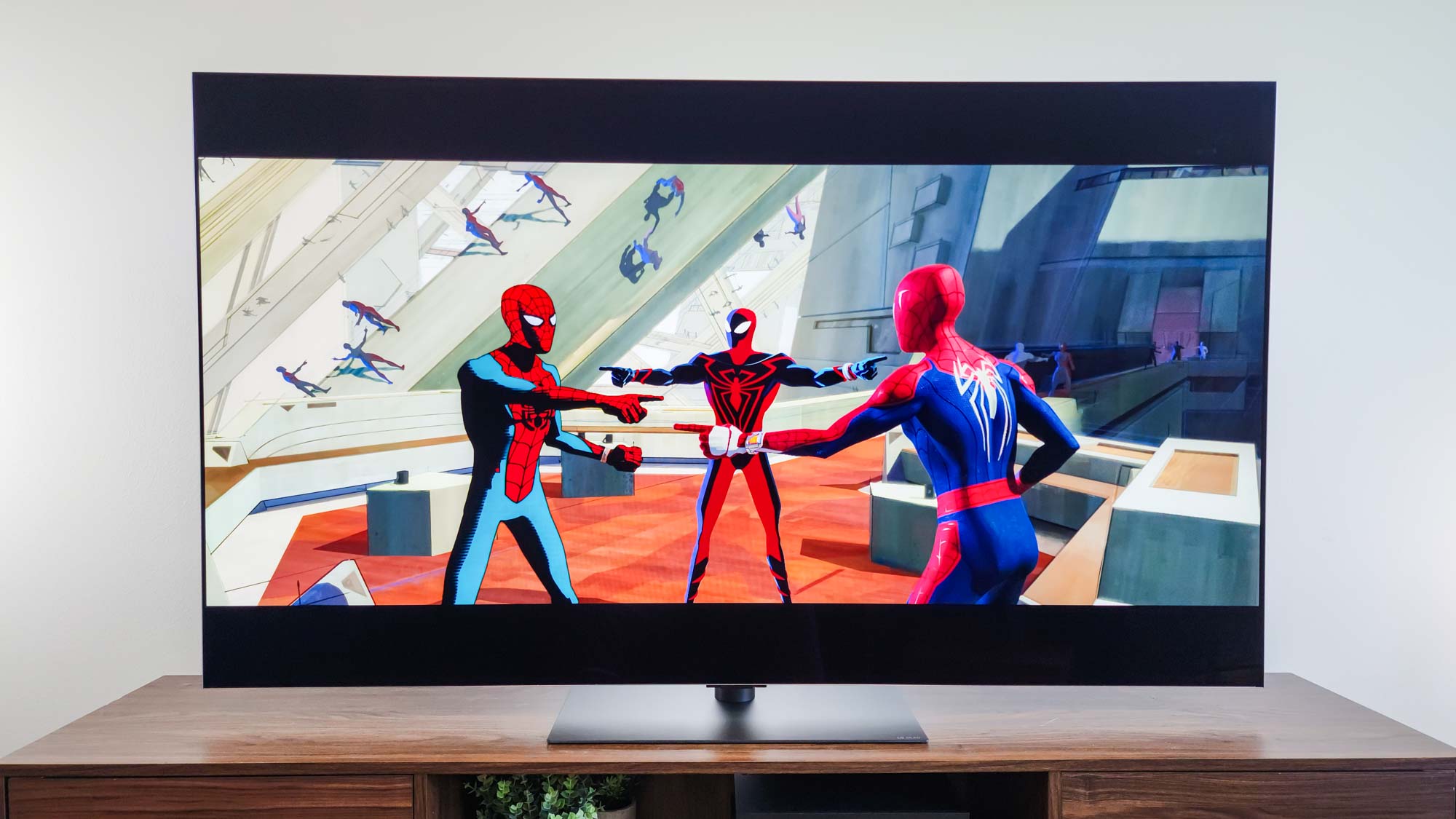
Located on the underside of the power light’s housing are a switch for activating or deactivating the integrated far-field microphone, and a hardware button you can push to turn the TV on and off or access Inputs, Volume, and Channel functions.
The other key difference between the G5 and LG’s lower-end sets is that this one does not come with a stand. (This was true of the G3 OLED two years ago, too, but not last year’s G4 OLED.) LG provided an excellent stand (an ST-G4SN65) for the purposes of our review, but you’ll have to buy your own if you want the TV on top of an entertainment center or other flat surface.
No, the G5 is intended for wall mounting. It ships with a special wall bracket designed to fit into the large depression on the rear panel, and thus make it possible for the TV to lay nearly flat against the wall, as though it were a painting. It’s not alone in this aesthetic, as both the Hisense Canvas and Samsung The Frame are also engineered to provide this gallery-style design.
LG G5 OLED review: Ports
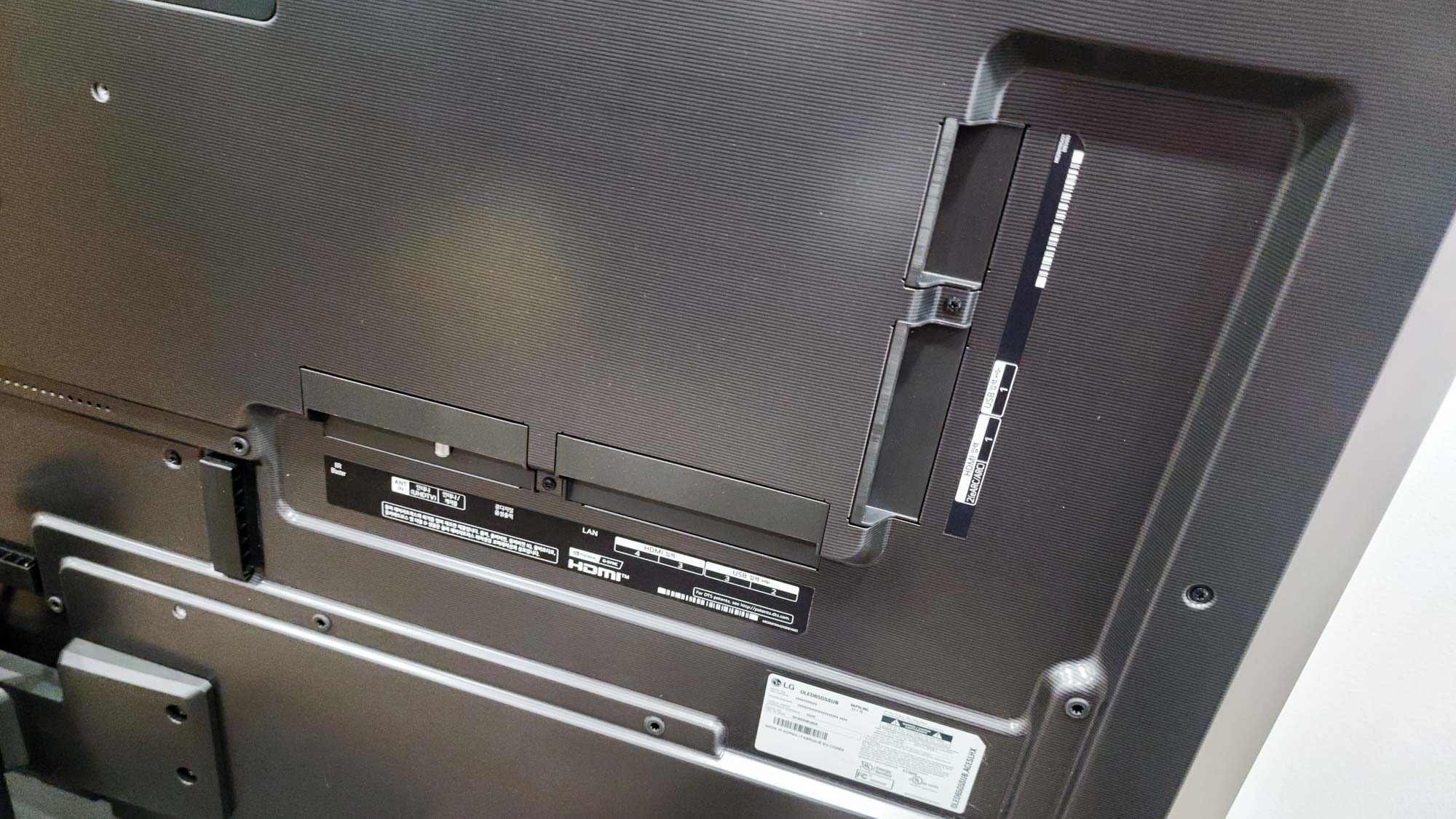
As a result of this, the port layout is slightly unusual, with the majority (a coaxial cable connector, Ethernet, two HDMI ports, and two USB ports) near the center of the TV’s back and facing downward and hidable beyond a snap-on plastic panel.
Three more ports intended for regular use (two HDMI, with one the eARC port, and one USB) are recessed in about 5 inches from the TV’s left edge and face outward.
All four HDMI ports support the newer and more powerful HDMI 2.1 specification that offers Auto Low Latency-Mode (ALLM) and the aforementioned VRR, which is capable of refresh rates as fast as 165Hz. HDMI 2.2 is right around the corner, but for now, this port selection is as good as it gets in 2025.
LG G5 OLED review: How we test
We follow a standard testing protocol for every TV we review at Tom’s Guide. Our benchmarks include a series of technical and subjective tests designed to rate the set’s performance. For our technical tests, we set the TV to Filmmaker Mode (usually the most accurate out of the box) and take measurements using a Jeti spectraval 1501-HiRes spectroradiometer, a Klein K10-A colorimeter, a Murideo 8K-SIX-G Metal pattern generator, and Portrait Displays’s Calman TV-calibration software. We also use a Leo Bodnar 4K Input Lag Tester for determining the TV’s gaming prowess.
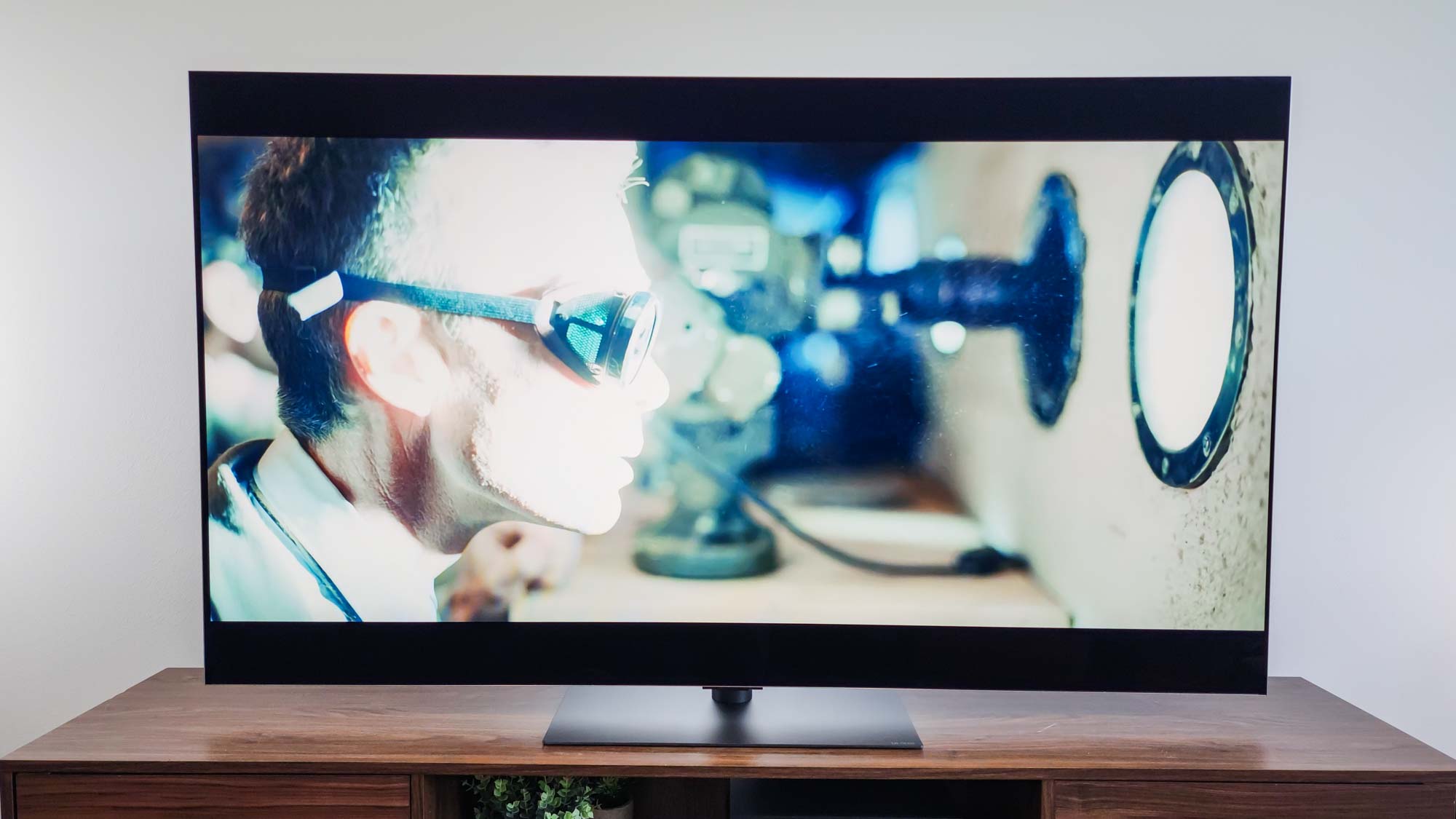
Subjective tests vary based on the reviewer but usually include anecdotes from a diverse selection of movies, TV shows, and other content reflecting the types of things you may actually want to watch on the TV. For a more detailed look at what we do and how we do it, check out our “How we test TVs” page.
LG G5 OLED review: Performance and test results
Though QD-OLED TVs have stolen most of the headlines the last couple of years with their combination of quantum-dot color and brightness with the perfect black and infinite contrast of OLEDs, LG’s new Four-Stack OLEDs can still rock your world.
Because the G5 gets so bright (see below), something LG attributes to its Brightness Booster Ultimate technology, it has no trouble pointing up even fine light details in the darkest scenes, while also supercharging color.
The results are astonishing with anything. I was especially thrilled by the roller-coaster contrast in movies like Oppenheimer and Dune: Part Two, which thrive on scenes of either pure black and white or more monochromatic color palettes. The G5 made them look nearly as vivid as they did in the theater.
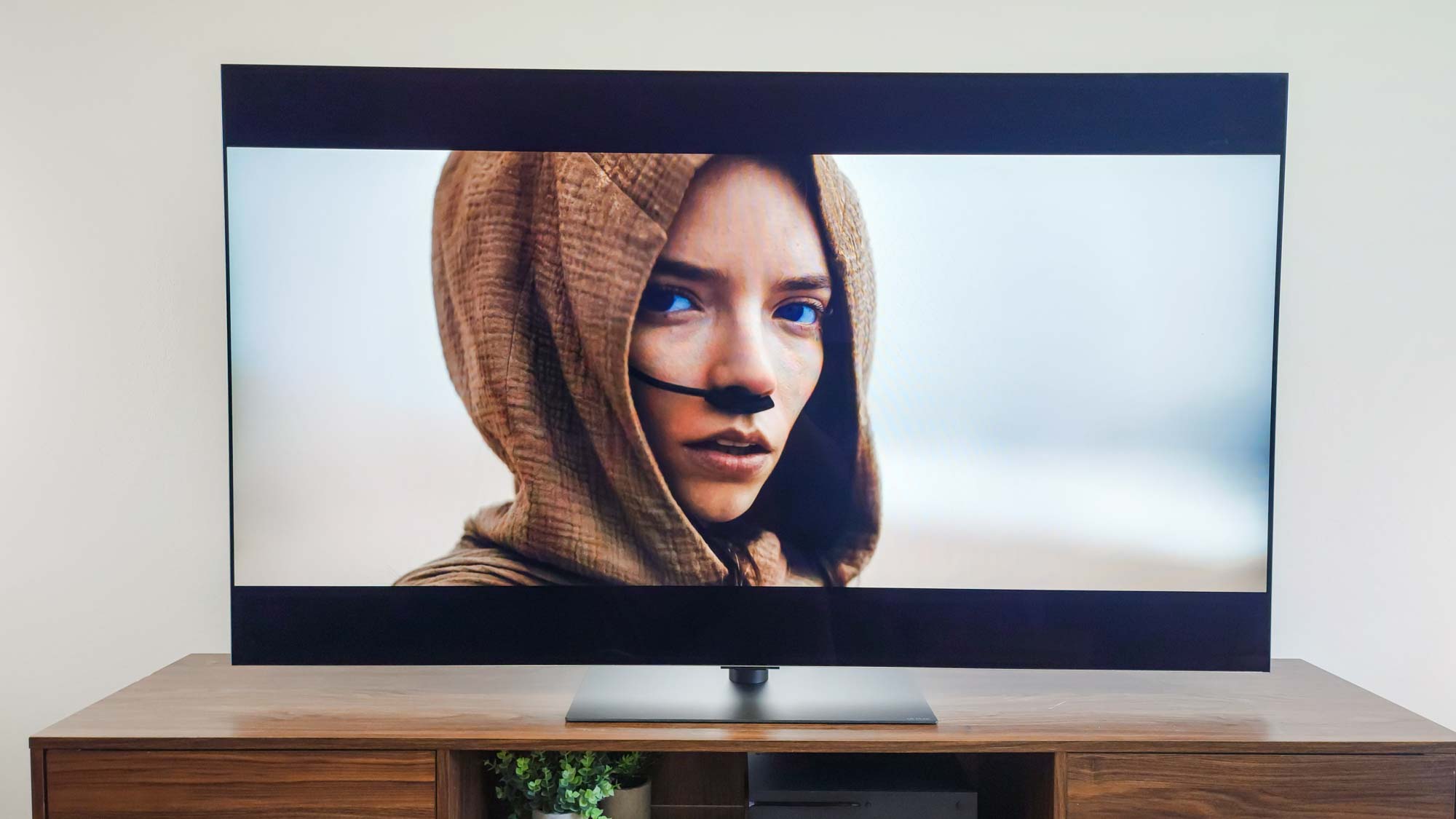
There is nothing to criticize about movies on the (literal) opposite end of the spectrum, either. Films like Barbie, Wicked, Spider-Man: Across the Spider-Verse, and The Super Mario Bros. Movie, all four of which may as well feature eye-detonating color as a main character, looked stunning on the G5.
As with all OLEDs, the G5’s picture doesn’t lose a whit of its distinctiveness or colors their saturation from any seat in the house. And though I haven’t experienced crippling glare problems with LG’s previous G-series sets, the new antiglare coating on the G5’s screen (which has earned the TV a UL Glare Free certification) eliminates what little problem was left.
| Row 0 - Cell 0 | LG G5 | LG C5 | LG G4 | Samsung S95F |
SDR Brightness (10%, in nits) | 465 | 335 | 358 | 268 |
Delta-E (lower is better) | 1.99 | 1.25 | 1.4 | 1.19 |
Rec. 709 Gamut Coverage | 99.69% | 99.67% | 98.55% | 106.88% |
HDR Brightness (10%, in nits) | 2,296 | 1165 | 1488 | 2,138 |
UHDA-P3 Gamut Coverage | 99.79% | 99.45% | 97.29% | 99.97% |
Rec. 2020 Gamut Coverage | 82.42% | 76.18% | 72.91% | 90.26% |
Input Lag (ms) | 12.9/9.2 (Boost) | 12.9/9.1 (Boost) | 12.9/9.2 (Boost) | 9.5 |
Our technical tests backed up what my eyes were already telling me. For an OLED, the G5 gets dazzlingly bright with both SDR (465 nits) and HDR (2,296) content, putting it not only on equal footing with the Samsung S95F OLED (2,138 nits), but within spitting distance of a lot of LED-based sets. (As an interesting point of comparison, the G5 proved more than 800 nits brighter with an HDR signal than its predecessor, the G4 — a truly impressive generational leap.)
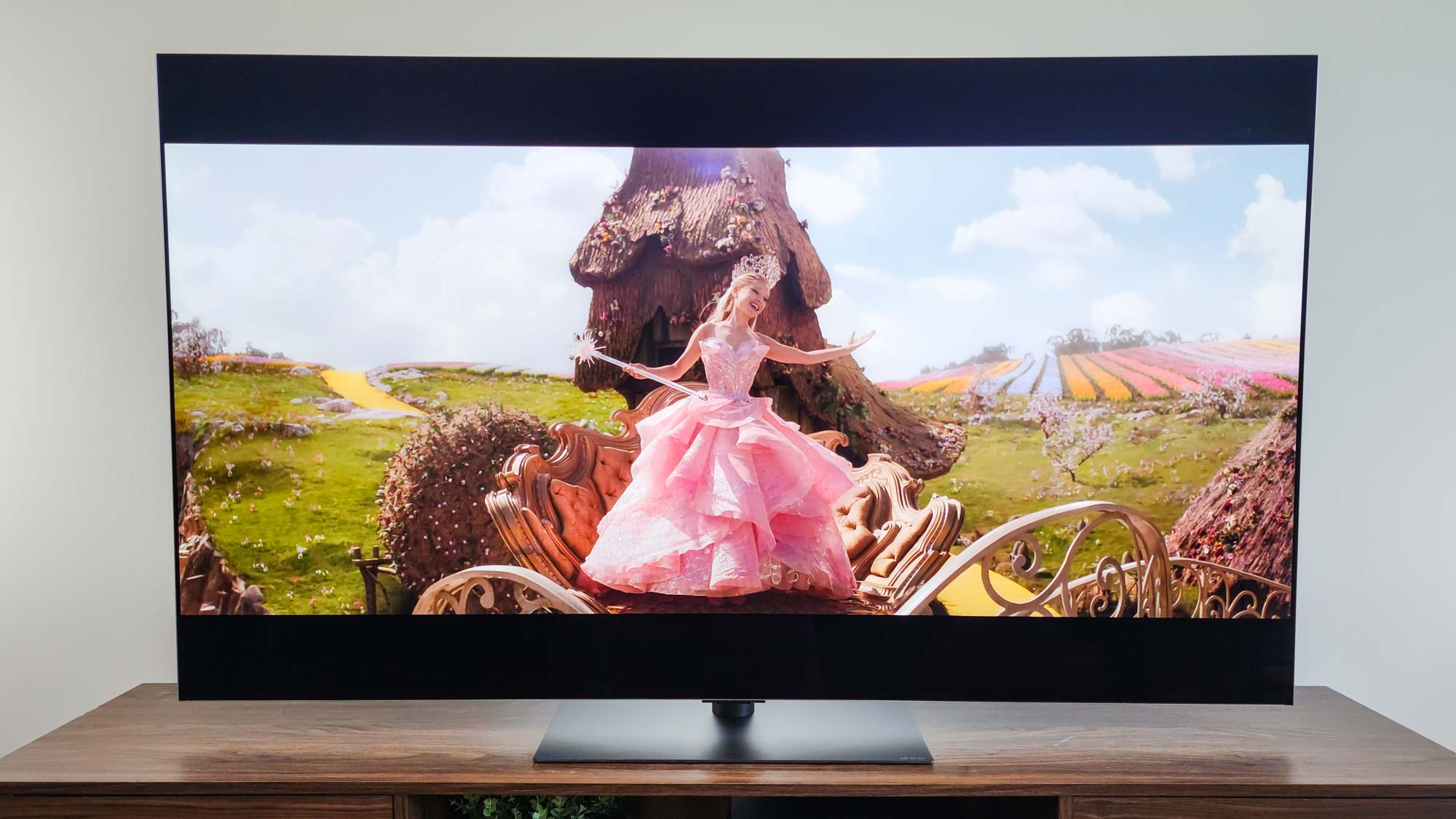
We measured its Delta-E (a value representing the difference between a color at the source and as displayed on the screen, with lower numbers being better) as 1.99, and its coverage of the Rec. 709 (SDR) color gamut as 99.69%, and its HDR performance in coverage of the UHDA-P3 gamut as 99.79 and the Rec. 2020 gamut as 82.42. In every case, this is outstanding, if never quite category leading.
The similarly priced S95F, and even some lower-cost sets like the Samsung S90F and LG’s own C5, for example, had marginally more accurate colors, and both Samsungs covered noticeably more of the Rec. 2020 gamut.
LG G5 OLED review: Audio
Audio on the G5 is fine. It never stood out as either a detriment or a boon while watching movies or series, and when just playing music it was in no way offensive with either low basses or high trebles. The 4.2-channel, downward-firing speaker system, complete with Dolby Atmos, is unquestionably good enough for the purpose of everyday TV watching. But not much more than that.
In order to get the TV to sound as good as it looks, however, you will definitely want to add one of Tom’s Guide’s best soundbars.
LG G5 OLED review: Gaming
LG’s higher-end TVs have long been good for gaming, and the G5 is surprisingly no exception. As measured with our Leo Bodnar 4K Input Lag Tester, the G5 registered an outstanding 9.2ms of lag when the Game Optimizer boost function was enabled, and a still-strong 12.9ms with it off. This puts the G5 in the first rank of gaming sets, right alongside the best gaming TV, the LG C5 OLED.
There are plenty of gaming features, too, including Dark Room Mode and Multi View, which are accessible through the Game Optimizer menu (when you’re in that mode) and a pop-up game bar you can raise while you’re playing a title. The G5 also supports AMD FreeSync Premium and is Nvidia G-Sync compatible.
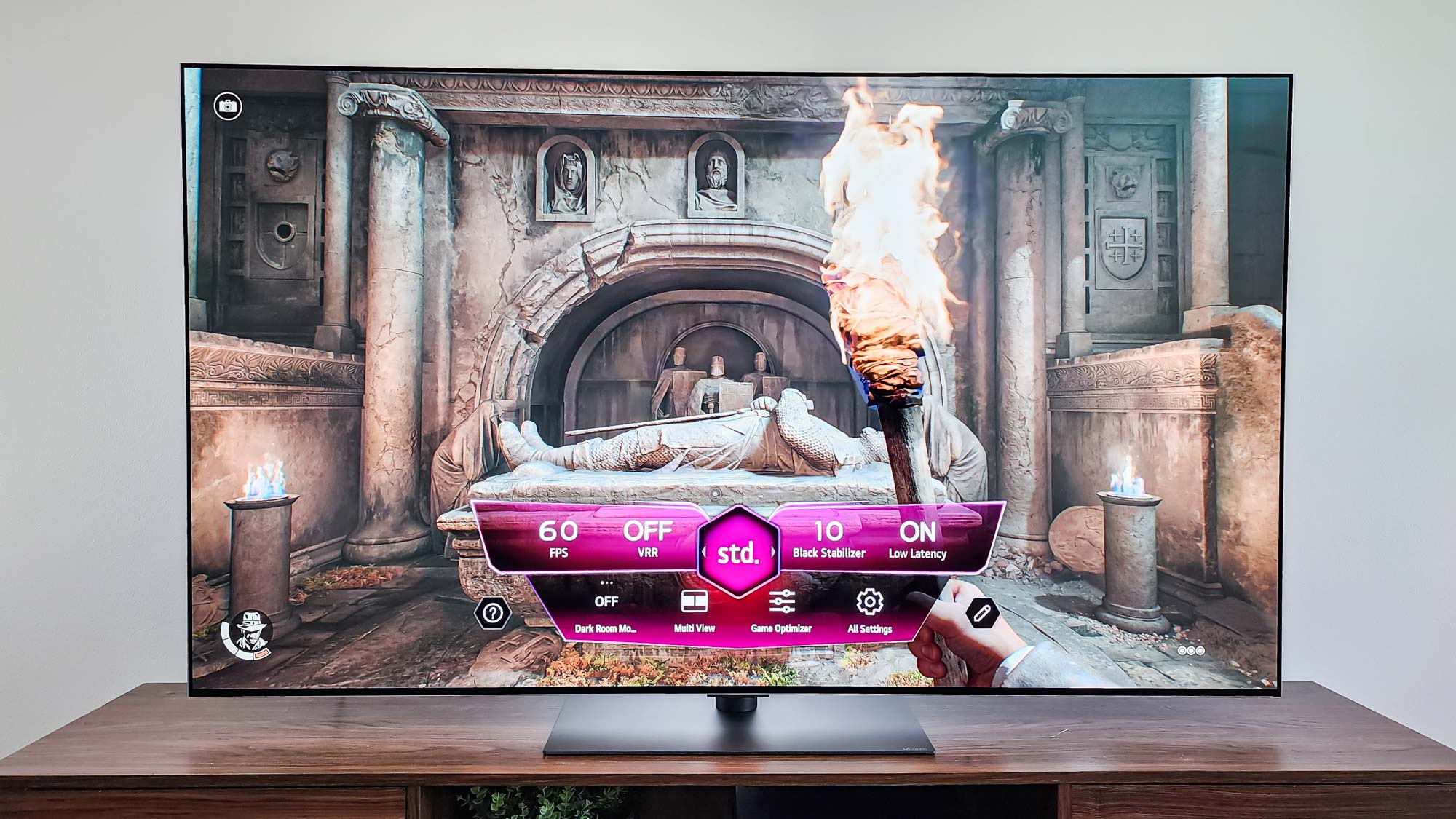
Indiana Jones and the Great Circle played beautifully and looked absolutely amazing on the G5, with the G5’s superb contrast and brightness handling accentuating every nook and cranny of the water-hewn caverns and dank secret passages that provide so much of the game’s rich, satisfying atmosphere.
LG G5 OLED review: Smart features
LG has not abandoned its proprietary webOS operating system — and why should it when it’s one of the best you can find on a TV?
The easy-to-navigate home screen is divided up into rows, with an advertising carousel at the top, a row of rectangular cards that group various functions such as sports or gaming, a highly customizable app bar, then below that a row showing content from your recent inputs and offerings from the LG Channels streaming service.
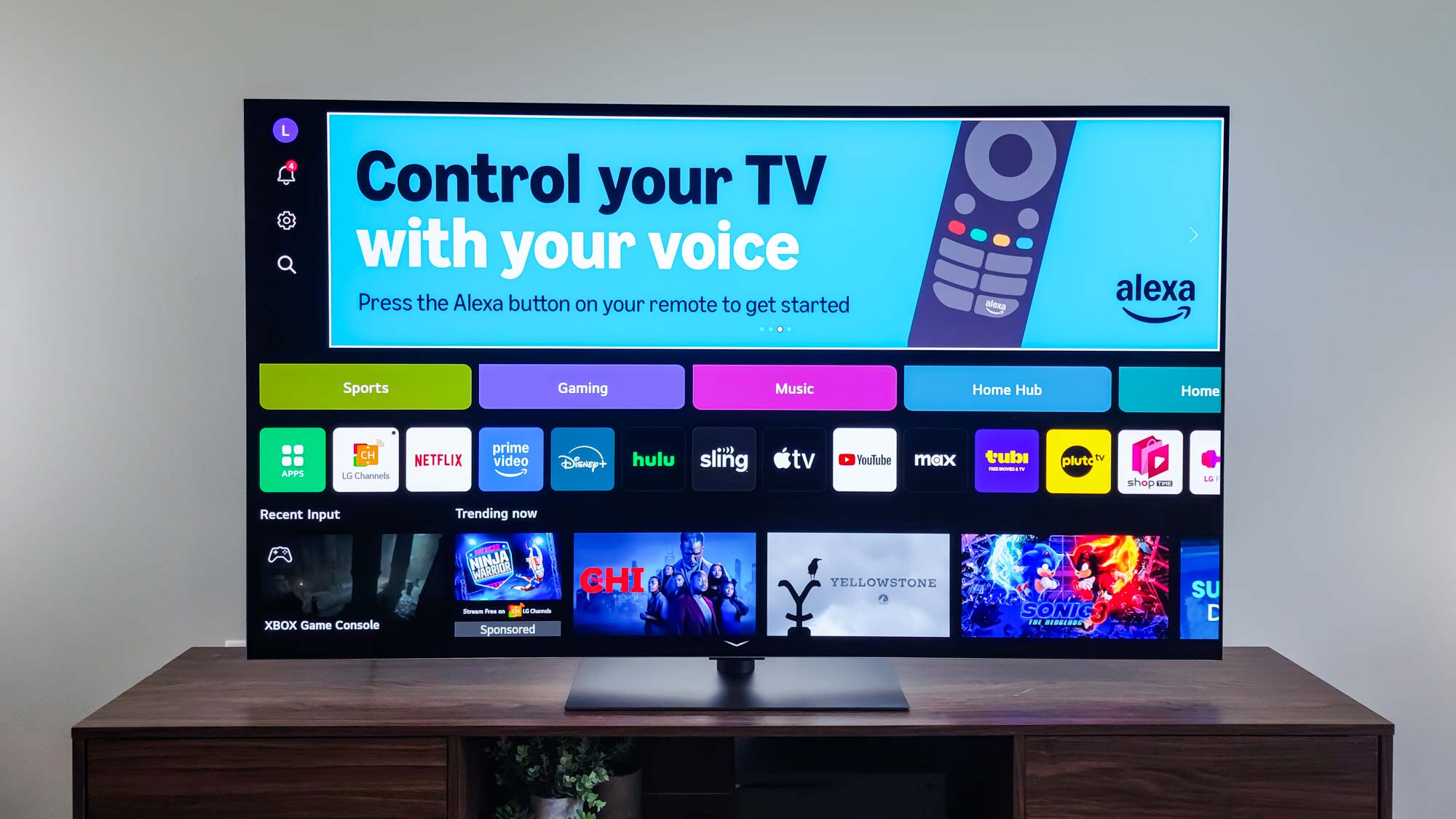
It shouldn’t be hard to find something to watch from the home screen, but you can also view video from your mobile device with Google Cast or Apple AirPlay or watch live broadcasts on the integrated ATSC 1.0 tuner. (Due to an ongoing licensing dispute, there is no ATSC 3.0 tuner, which would allow for over-the-air 4K broadcasts. This is common in recent TVs, but it’s still a shame that it’s not included here.)
AI features comprise a voice search option that, as far as I can tell, is functionally identical to the previous, non-AI version (and works just fine from either the remote or the far-field microphone), and a “concierge” that makes additional viewing suggestions based on your interests and watch history. I was not bowled over by these, but they are there if you want to take advantage of them. Amazon Alexa is also supported, in case you have a smart home full of Amazon’s Echo devices.
LG G5 OLED review: Remote
Like all LG’s TVs beginning this generation, the G5 ships with a thoroughly redesigned Magic Remote that retains much of the (controversial) original’s functionality in a more streamlined package. It still can be used like an on-screen mouse by waving it (that’s the “magic” part), and the select button in the center of the directional control is still a scroll wheel for some reason.
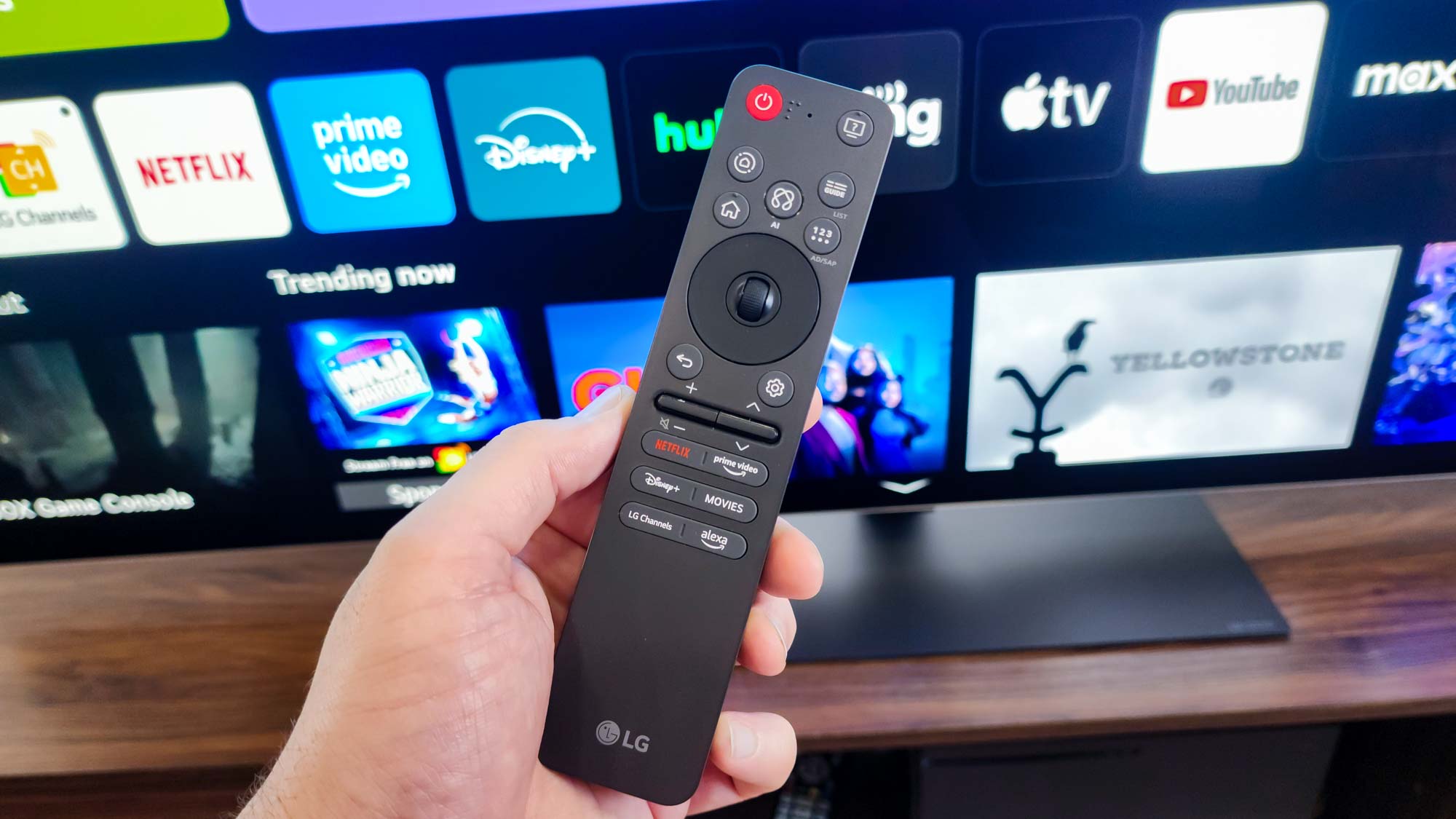
But in addition to losing the antiquated number keys and color buttons, LG has also dumped some I would consider essential (Inputs, which you now must access via the Home Hub button, and Mute) and renamed or added others that may be of limited use (“AI”).
This new Magic Remote is more in line with Sony’s and Samsung’s recent redesigns, and its new matte, candy-bar design is more traditional than the previous glossy, ergonomic one. These changes won’t be for everyone, though the overall offering is a functional one.
LG G5 OLED review: Verdict
The big question with the LG G5 isn’t whether it’s a good TV, or even whether it’s a great one. Each of those questions merits an emphatic “yes.”
What really needs to be asked instead is: Is it worth the money? If you have the money budgeted for a high-ticket home entertainment purchase, that’s also a firm yes.
The big advantage the G5 has over the C5 and its other competitors is its incredible brightness. But that’s a bit of a matter of diminishing returns past a certain point. And as much as I loved everything I viewed on the G5, the fact remains that the C5 — despite being not as bright on paper — looked almost as good, and it costs nearly $1,000 less. Some other sets, like the Samsung S90F (which costs about the same as the C5), even edge out the G5 in other ways.
Good as the LG G5 is, it’s not quite an undisputed king. I still think this is one of the best TVs you can buy, and would recommend it to anyone looking for a premium design that matches that G5’s excellent picture performance. If you can live without the gallery-esque aesthetic, however, the more affordable C5 is still my go-to pick in 2025.
Matthew Murray is the head of testing for Future, coordinating and conducting product testing at Tom’s Guide and other Future publications. He has previously covered technology and performance arts for multiple publications, edited numerous books, and worked as a theatre critic for more than 16 years.
You must confirm your public display name before commenting
Please logout and then login again, you will then be prompted to enter your display name.
